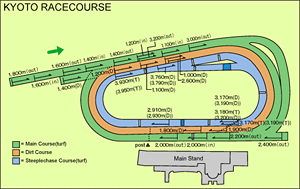2015 Tenno Sho (Spring) (G1) - Preview
Though the spring classics bring out the best of the blossoming youth, not forgotten are the racing veterans with more seasons behind them. And, this Sunday at Kyoto Racecourse, those veterans will be afforded considerable time in the spotlight in what is considered by many to be Japan’s penultimate in prestige – the Tenno Sho. Nearly two laps around the picturesque Kyoto course, its infield waters graced with white swans, this spring tradition is truly the stuff of romance.
Open to horses 4 years old and up, it’s a race that now packs a first-place prize of 150 million yen. Following the Satsuki Sho (Japanese 2000 Guineas) by a fortnight, the spring version of the Tenno Sho is JRA’s longest G1 race at 3,200 meters. An absolutely grueling test of stamina and the ability to keep one’s cool, it’s one of the few races that gives stayers their chance to show their stuff, the stuff that keeps on going when others no longer can.
Sunday, May 3, will mark the 76th running of the spring edition of the Tenno Sho, a race that is held twice a year, at Kyoto in the spring and at Tokyo in the autumn. It is the 151th running of the race overall.
The betting this year is expected to focus on the trio of Kizuna, Admire Deus and Sounds of Earth, but the 18 members will offer something for everyone eager to place a bet. That wager may be based on a lengthy study of form or be but a whimsical inspiration. Pull for a perennial underdog. Show support for one of the girls or root for a historical three straight wins of the race. It’s all fun and anything’s possible. Double-digit picks have proved victorious three times in only the past 10 runnings and the winning exacta in 2012 dished out 208,630 yen on a 100-yen wager.
The spring Tenno Sho took on its existing format in 1938, when the distance was changed to 3,200 meters from 2,700 meters. In the years prior to that, races held in honor of the Emperor were organized separately by various local racing clubs around the country and unified in 1937 to make way for the Tenno Sho as it is known today. The race is open to a maximum of nine foreign-based runners. There are none in the lineup this year.
The Kyoto 3,200 starts in the backstretch and 200 meters in starts a climb of 4 meters over 400 meters until the ground dips into the stretch. The field passes the grandstand and horses tend to take a breather as they turn out of the stretch. Coming into the hill once again, the pace tends to pick up and positioning for the final drive becomes heated.
It’s a difficult race for frontrunners, though wire-to-wire victories have been had. Late closers, however, also have found it difficult to win. The most common formula for success comes from a long spurt starting at the hill about 900 meters out.
Deep Impact holds both the course and the race record with his winning time in the 2006 Tenno Sho of 3 minutes 13.4 seconds.
Runners will carry 58 kg. Females receive a 2-kg allowance. Post time for the Tenno Sho is 3:40 p.m. The race is the 11th race on the Kyoto 12-race Sunday card.
Here’s a look at the expected race favorites.
|

Kizuna |
|

Admire Deus |
|
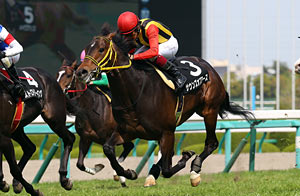
Sounds of Earth |
|

Win Variation |
|

Gold Ship |
|

Denim and Ruby |
|
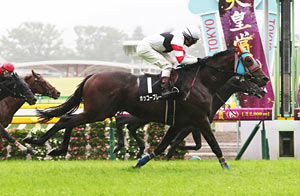
Hokko Brave |
|

Fenomeno Note: Fenomeno will not run in this race.
Fenomeno – Fenomeno, winner of the 2013 and 2014 editions of the spring Tenno Sho, will be aiming to become the first horse ever to win the same JRA G1 race three years in a row. He has, however, not had a win since last spring’s Tenno Sho. In his four starts since, he has tallied double-digit finishes in two starts and eighth-place performances in the others. His last race, the Nikkei Sho, saw him cross the line in eighth, but the race was his first since the yearend Arima Kinen. Keita Tosaki had the ride in the Nikkei Sho and is expected to replace Masayoshi Ebina (who rode the previous two Tenno Sho) on Sunday. Trainer Hirofumi Toda believes the horse’s lack of success recently is due more to psychological factors than physical ones. “The jockey may have had too much of an image of the horse being keen, as he was in work, and thus didn’t ride him aggressively enough in his last race. This time, he’ll be riding for the second time and should have a better handle on him.” A third win is a tall order even under the best conditions, however. In 1981, the Tenno Sho first allowed former winners of the race to enter in subsequent years, and though T.M. Opera O captured the spring and fall versions in 2000 followed by the spring version in 2001, no horse has won three spring versions in a row. Mejiro McQueen came closest in a bid for three straight when he ran second in 1993 losing by 2 1/2 lengths to Rice Shower. |
|

Last Impact |
|

Fame Game |
|
|

- Preview
- Barrier draw
- Past performances of runners

- News
- Race result
- Video
(English racecall for races after 2006)
- 2025

- 2024

- 2023

- 2022

- 2021

- 2020

- 2019

- 2018

- 2017

- 2016

- 2015

- 2014

- 2013

- Photo Gallery
2025 Winner: Redentor
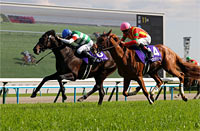
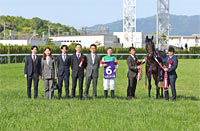
2024 Winner: T O Royal
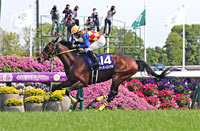
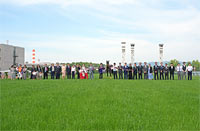
|
















